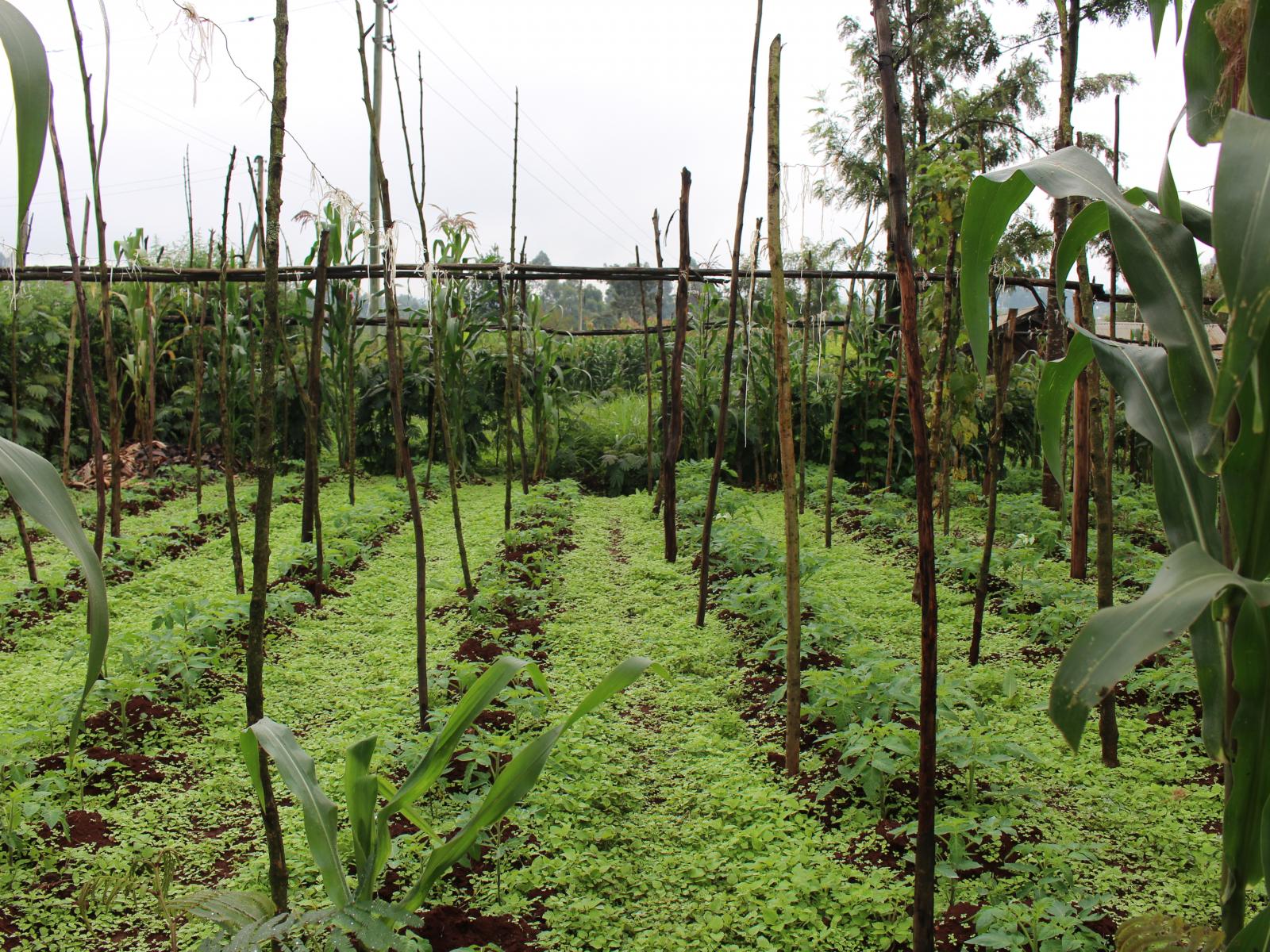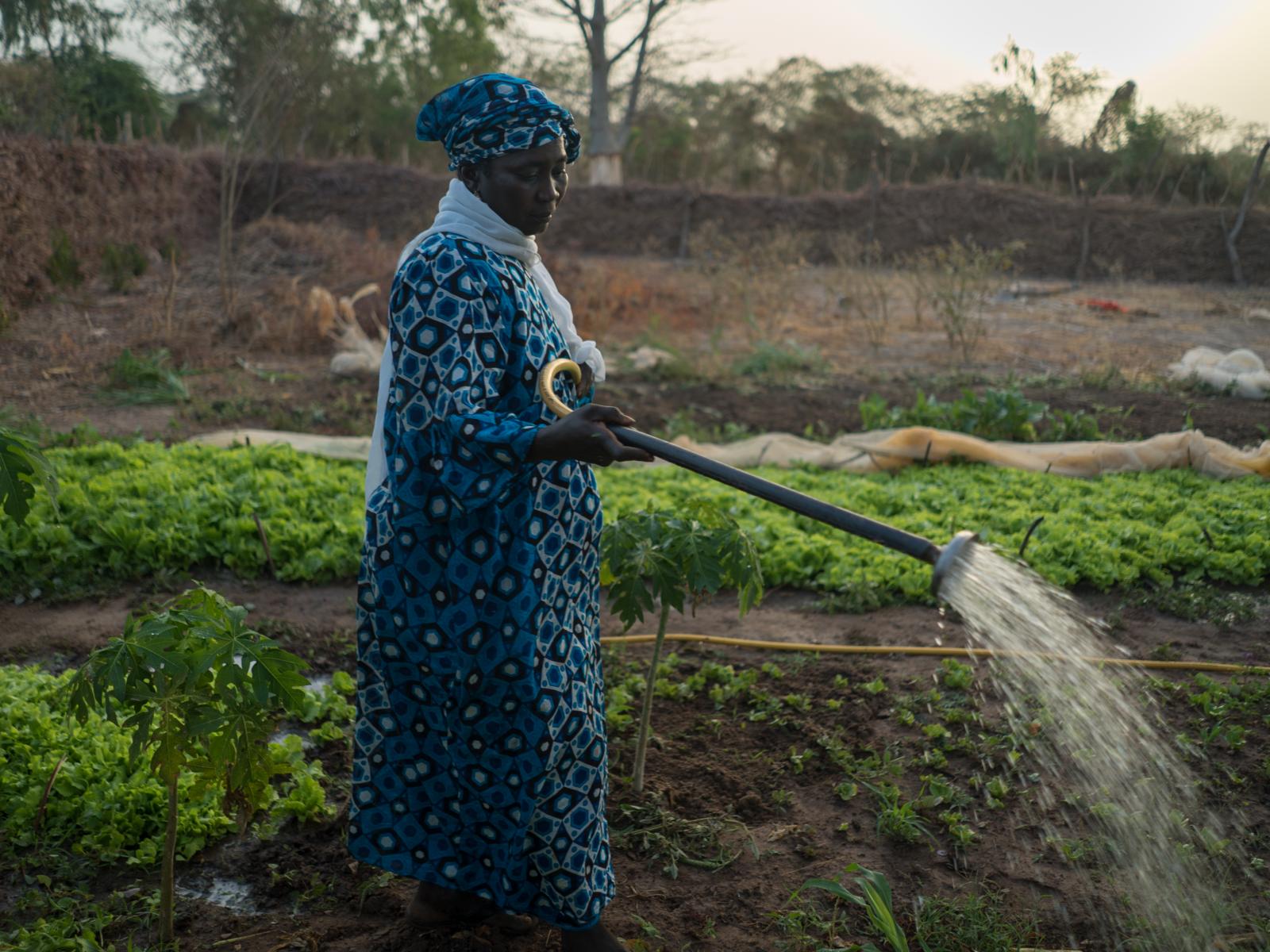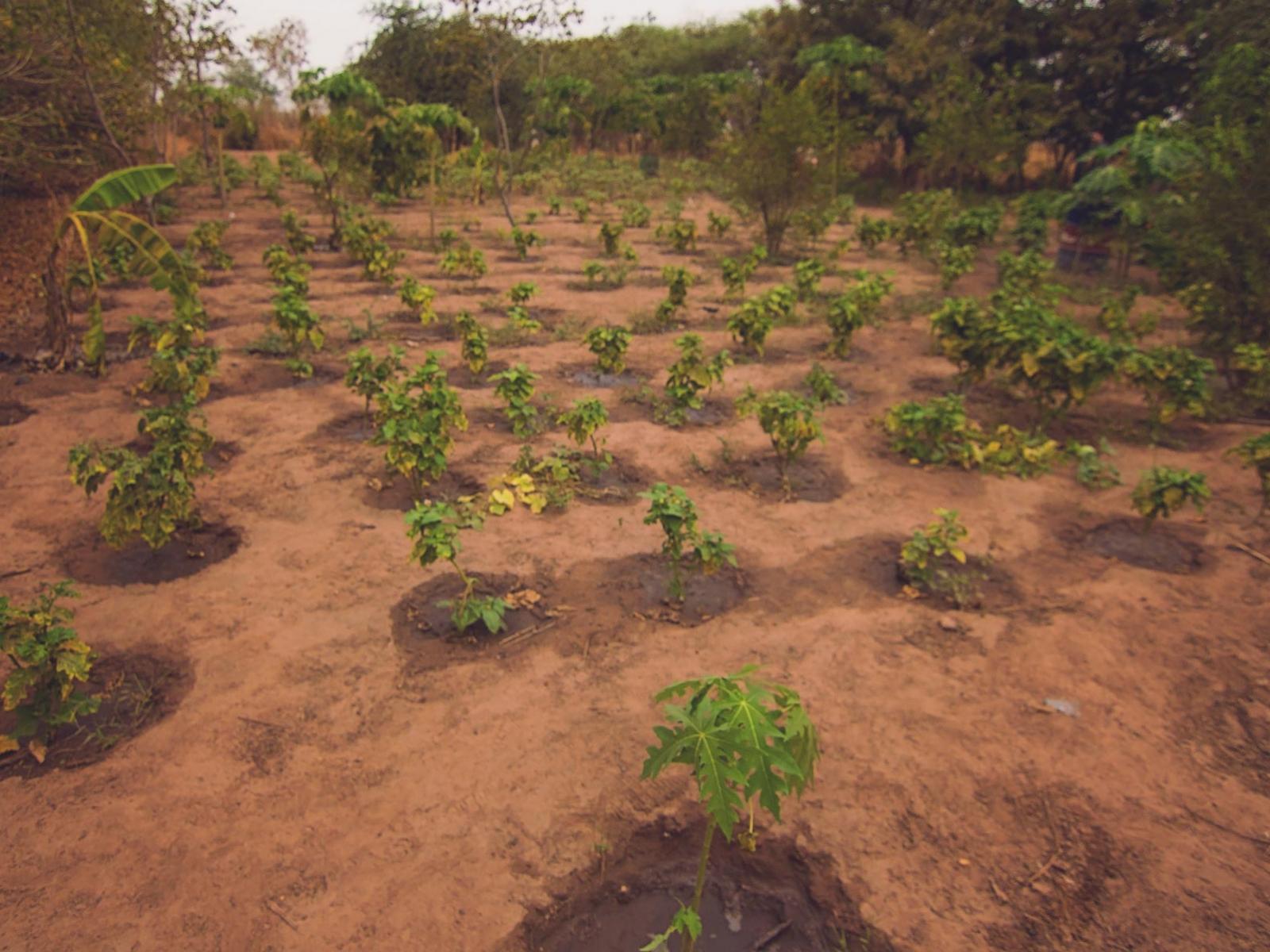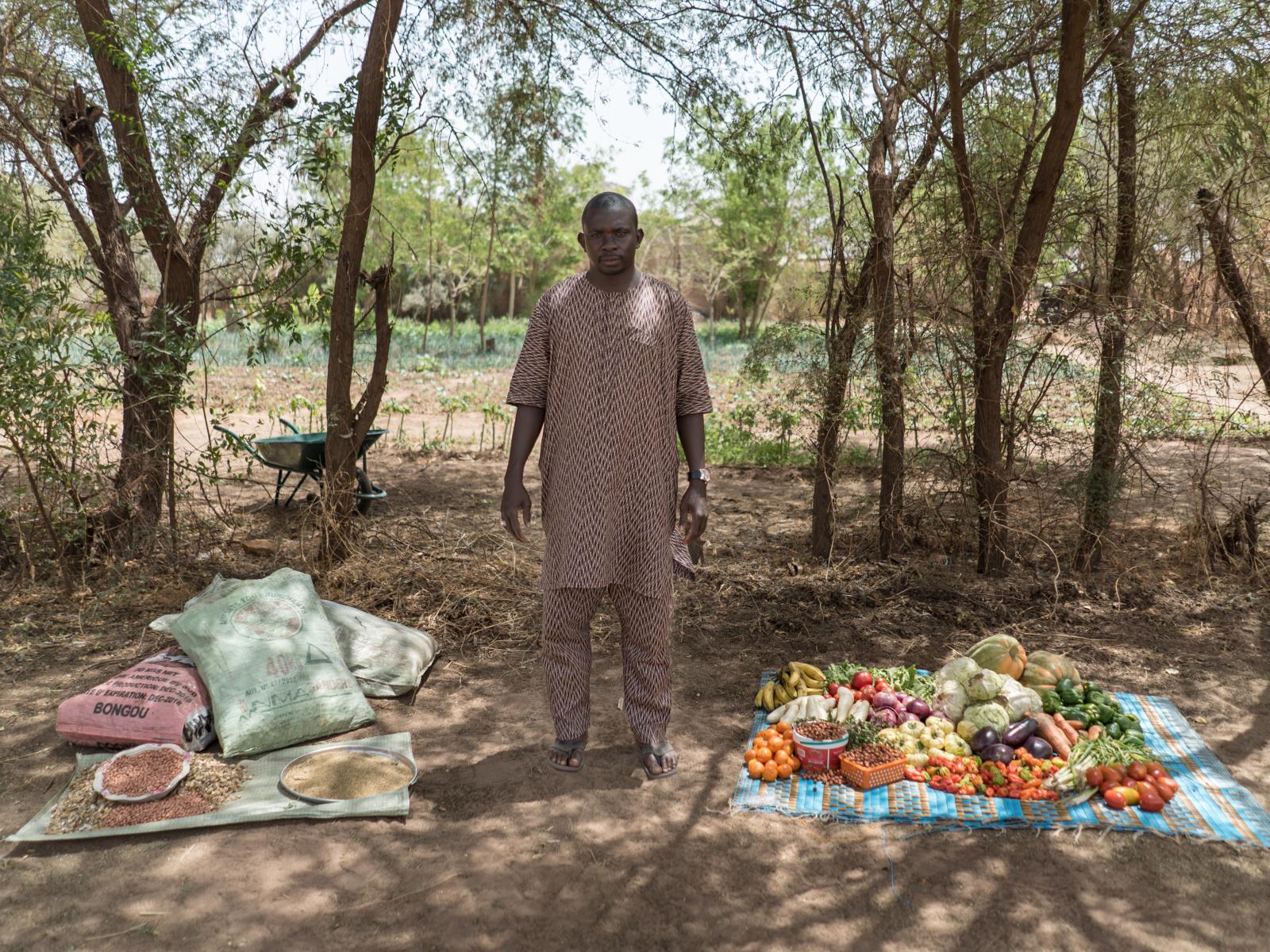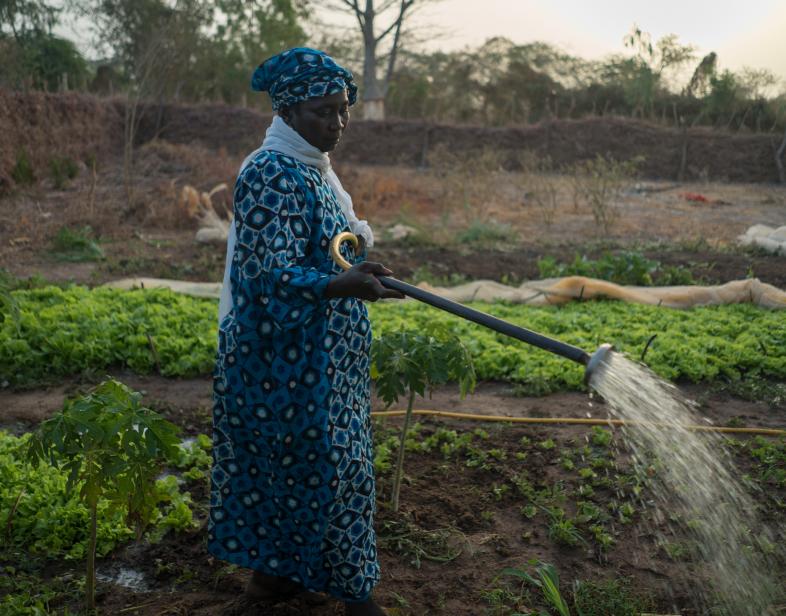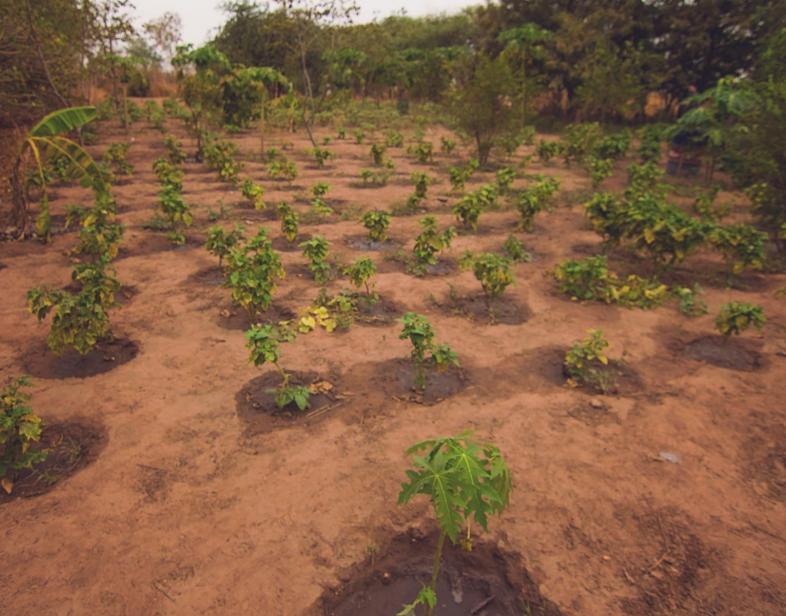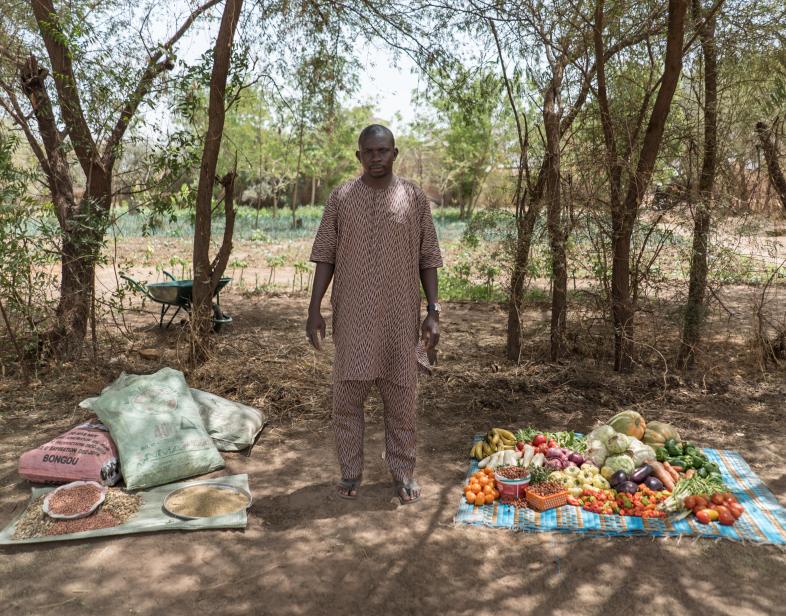An Overview Of Our Solution
While industrial farming practices contribute to a changing climate, agriculture done right has the ability to save the
planet! That’s why Trees for the Future (TREES) helps farmers in the developing world increase food security, generate
sustainable income, and revitalize degraded lands through the Forest Garden Approach (FGA). Each year, TREES works
directly with about 5,000 farming families consisting of over 30,000 people. Annually, TREES helps farmers plant 20
million trees and cultivate farms to grow, on average, 27 varieties of crops/shrubs on land thought to be infertile. This
achieves average income gains of 400%. TREES also collaborates with agricultural development and food assistance
organizations to train extension experts in the FGA to help others adopt sustainable, climate-smart agriculture
programming, amplifying these powerful impacts.
- Population Impacted: 5,000 families, or approximately 30,000 individual
- Continent: Africa
Context Analysis
TREES works directly with smallholder farmers in Sub-Saharan Africa, who often face challenges to provide for themselves and their families which results in the use of harmful agricultural methods that allow farmers to meet short-term survival needs but destroy their lands long-term. Harmful methods include planting monocultures that drain the soil of natural nutrients, resulting in continually worsening yields as the years continue. This prevents farmers from feeding their families nutritious foods, as they
only grow a limited number of crops and do not generate enough income to buy more. Before starting the 4-year FGA, TREES’ research shows farmers were growing an average of 2.78 food crops per hectare with even fewer marketable products. These are easily doubled by the FGA. Farmers also had very high food insecurity levels and low dietary diversity scores shown on TREES’ baseline surveys. Lastly, farmers must guard against outside threats to their land, such as animals and theft.
Describe the technical solution you wanted the target audience to adopt
The FGA is a training program pioneered by TREES that helps lift farmers in the developed world out of
poverty while revitalizing degraded lands. Practically, a Forest Garden is a multi-tiered mixture of trees,
shrubs, and crops that grow on 1-2 acres of land. Trees are a vital resource for smallholder farmers since,
once established, they require very little labor and resources to be productive. Centering farms on trees is
not difficult, but most African farmers are resource- and technology-poor and lack the resources to
undertake improvements. The FGA is structured to resolve these issues. Locally-based technicians work
directly with farmers to design and adopt Forest Gardens with each family to protect their land, maximize
yields and provide consistent income while improving the quality of the land being farmed. Farmers begin
to see results immediately and by the end of the FGA, they are well on their way to a prosperous future.
Type of intervention
Describe your behavioral intervention
Farmers in the developing world are often hesitant to change farming practices out of year of yield and income loss.
Convincing them that embracing diverse, tree-centric farms is an important first step. Because once farmers enter our FGA,
they see almost immediate income increases, providing them with hard evidence of the positive impact changing harmful
practices can lead to.
TREES builds each farmer’s capacity to maximize FGA benefits. By teaching them to transform struggling farms into FGs,
farmers are able to support families/businesses in ways they did not think possible with former practices. Farmers no longer
choose environmentally harmful options for their land after being presented with an alternative that provides better
productivity, yields and income. Given that farmers begin FG projects with a high food insecurity score of 9.18, which drops to
2.96 within only 2 years of the FGA and given that farmers are driven by the need to provide for their families, farmers who
learned the FGA no longer have a reason to choose harmful farming methods.
TREES ensures behavior adoption by working with farmers and training them to implement FGs. We hire local agroforestry
experts to teach farmer groups 16 learning modules over the 4-year FGA, which gives farmers all the support needed to feel
confident with the FGA and provides them needed education to continue the FG after the 4 years.
As needed, please explain the type of intervention in more detail
TREES provides farmers with education that allows them to choose between continuing their unprofitable agricultural methods
and the FGA, which promises stronger incomes, hunger alleviation, dietary diversity and a better livelihood for them and their
family. In addition, TREES provides necessary training to farmers who choose the FGA and works with them as they
implement their own FGs, making the choice even easier. Farmers are aware of their struggles with monocropping agricultural
practices, so the option of being trained on a new method with a successful track record of having better productivity,incomes, and higher yields for other smallholder farmers, encourages them to choose the new environmentally sustainable
method and behavior.
Describe your implementation
Implementing the FGA is done in a 5-phase approach starting with mobilizing staff and stakeholders (government representatives, community leaders, potential partners) followed by protection, diversification , & optimization phases, which constitute FG establishment. In the protection phase, TREES technicians teach farmers to protect their land from threats through green walls, shielding land from
wind damage & outside threats. Farmers then diversify their crops through learning advanced farming techniques, increasing the number of food crops and marketable products. Next, farmers optimize their FGs by adopting integrated pest management (IPM)/conservation techniques. Finally, farmers graduate, indicating the FG will be successful without TREES and solely through the farmer’s capabilities allowing farmer groups to continue supporting each other in the on-going FG development.
By providing farmers with extensive training, regular coaching, and site visits, TREES changes farmer behavior
to utilize the FGA. For successful projects, TREES finds farmer groups who have a great need for assistance
and a high likelihood of success. Farmers provide land, labor, water and a strong, entrepreneurial drive and
spirit. Obstacles TREES encounters include disease, climate, and market fluctuations, which we combat with farmers.
For diseases, the plant diversity inherent in FG design helps stop initiation/spread of any one pest by mimicking nature, offering refuge for predators and buffers between potential disease transmittance sites. Our flexible trainings allow us to deliver IPM courses when outbreaks arise. For climate, we maximize rainwater usage by ensuring seedlings are planted at the start of rainy seasons and plant locally-adapted, drought/flood tolerant species. For market fluctuations, FGs provide farmers with larger sets of marketable products that
generate revenue. The species raised in each FG is informed by market studies, partnering organizations, and farmers.
External connections
Key collaborators include United States Peace Corps (Peace Corps), Jane Goodall Institute-Spain (JGI), Grameen Foundation, United Nations Institute for Training and Research (UNITAR) The Ohio State University (OSU), and The Tony Robbins Foundation.
TREES trains Peace Corps agriculture/agroforestry staff to implement the FGA within their programs & volunteer corps, allowing the FGA to expand globally. JGI and TREES work to reduce pressure on forests and prevent harmful slash-and-burn farming which directly
threatens natural Chimpanzee habitats in Southeastern Senegal. Grameen Foundation and TREES work on microfinance for farmers in FG projects to allow them to save cash/build credit. UNITAR and TREES work to scale the FGA and disseminate FGA training materials to international bodies to allow them to implement the FGA without TREES’ presence.
OSU is working with TREES by implementing a Sustainable Village Water Systems Project in Tanzania, where TREES trains farmers to implement FGs near water access points created by the project. The Tony Robbins Foundation and TREES work to pilot a Guinea FG project and water access/micro-credit programs in Uganda and Senegal. This allows TREES to determine the scalability of working in Guinea as well as how more water/credit increases number of FGs, farmers and FGA successes. TREES’ work is also supported by over 300 private sector businesses, who understand the need to support climate change work and behavior change through CSR efforts.
Who adopted the desired behaviors and to what degree?
Our previous projects show that all farmers who make it through the 4-year program adopt the new
agricultural behavior of caring for a FG, as they have all they need to manage and maintain it. Our
previous farmers have been very vocal about how successful the FG is for them and their families. One
previous farmer in our Kaffrine Senegal project, Mate Mbaye, stated that he gets “more from my two acre
Forest Garden than I could get from six acres of peanut crop. My children have a future now, and as I
age, trees will continue to feed my family.” Furthermore, other farmers, who were struggling planting
monocultures of cash crops, now are growing hundreds of trees. One farmer has cashew trees forming a
wind break around 300 mango trees, which have vegetables growing beneath them. This allows her to
feed her sheep fodder from the trees, and support her family. To date, TREES have seen nearly 5,000
families adopt FGs.
How did you impact natural resource use and greenhouse gas emissions?
The primary natural resources that TREES’ FGA impacts are forests and water. The FGA impacts forests by
reforesting areas that have been degraded by harmful agricultural practices.Also, the FGA prevents
smallholder farmers from needing to cut down trees for resources as they can receive the timber they
need from their own trees and land. TREES impacts water by ensuring that FGs do not need large
amounts of water to survive. Farmers will plant trees at the beginning of rainy seasons to maximize use
of rainwaters and drought resistant trees are planted. This allows for less water being used than in many
agricultural practices.
As for greenhouse gas emissions, each FG will sequester 62.8 tons of carbon in its lifetime. This was
measured through a TREES carbon study led by Michigan State University professor Lauren Cooper. She
used IPCC guidelines to determine the amount of carbon that would be sequestered by an average TREES
Forest Garden (1 hectare).
What were some of the resulting co-benefits?
While there are many co-benefits of FGs, the most prominent include:
Food Security –TREES performs a baseline survey in every FG to determine how food secure farmers are before beginning
our project. Farmers begin with very high food insecurity scores and within 2 years these scores are lower than what we
intended in 4 years.
Nutrition – Using indices created by USAID, TREES determined that before our programs, farmers had a dietary diversity
score of 5.62, which was raised to 9.05 within 2 years, surpassing our 4-year target.
Biodiversity – From our baseline surveys, TREES determined that farmers had only an average of 7.51 observable plant
species per hectare, but had 42 within two years of the FGA. In addition, the number of trees per hectare rose from a
baseline of an average of 20 to 912 simply through planting green walls in the first year. This number continues to grow with
the aim of having 2,500 trees per hectare by the end of the 4 years.
Sustainability
The FGA allows farmers to maintain their own livelihoods in an environmentally sustainable way. The initial 4-year program
requires private funding, however upon termination of the funding period, farmers no longer need TREES presence to
continue their FG. Within the 4-year program, TREES teaches farmers how to sustain their Forest Garden so at the end of the
program, farmers will continue generating additional income through their FGs. Their new income will come from selling
products at markets, and in order to continue production of these crops/products, farmers will be using the sustainable FG
method, as it allows long-term productivity due to the wide variety of crops/trees being grown.
Return on investment
TREES works off of a business model of raising 10 cents per tree planted, which includes overhead costs. This adds up to
approximately $640 invested in each farming family. The results from this are exponential as it allows each individual farmer
to raise their personal income by an average of 400% and allows them to provide for themselves and their families in ways
not possible before. In addition, the environmental returns are significant in that formerly degraded soil is now revitalized
allowing long-term productivity, improved biodiversity, and the trees planted result in 62.8 tons of carbon sequestered per FG.
How could we successfully replicate this solution elsewhere?
This FGA has been successfully replicated many times throughout Sub-Saharan Africa. TREES has implemented a total of 16
FG programs, with about 300 farmers in each. FG programs are in Kenya, Uganda, Tanzania, Cameroon, Guinea, and Senegal.
To continue replicating the project, funding for the initial 4-year project needs to be raised. Following this, TREES can
replicate our successful FG programs, just about anywhere that will ensure fidelity to TREES’ 5-phased methodology.
As for scalability, TREES’ FG projects have nearly doubled in the last 12 months due to increased investments. TREES is able
to manage this level of growth. Further, we launched the Forest Garden Training Center about 7 months ago for farming
practitioners anywhere in the world to integrate FGs to their work and by extension, scaling our approach and its positive
results. We already have over 1000 users on this online training platform.
